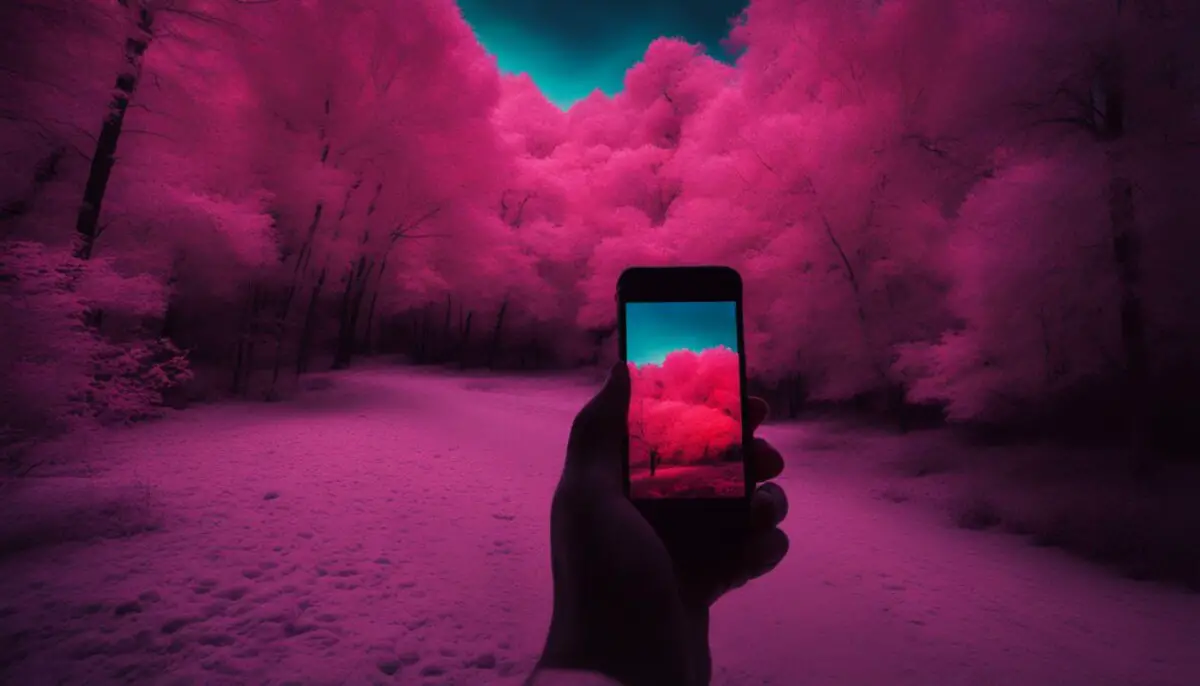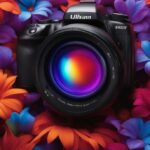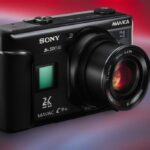Last Updated on 5 months by Francis
Have you ever wondered if your iPhone camera can see infrared light? Infrared light falls outside the visible spectrum, and is invisible to the naked eye. However, some cameras have the capability to detect it, leading to a unique perspective on the world through infrared photography. In this article, we will explore the potential of the iPhone camera in capturing infrared light and discuss any available options for doing so.
Before we dive in, let’s first understand how the iPhone camera works and the concept of infrared light. We will then explore the possibility of infrared photography on an iPhone and any third-party apps or external filters that may be necessary.
Contents
Key Takeaways:
- The iPhone camera may or may not have the capability to capture infrared light without external enhancements
- Infrared photography offers a unique perspective on the world
- Third-party apps and external filters may be necessary for capturing infrared light on an iPhone
- The limitations of the iPhone camera in infrared photography should be considered
- Alternative smartphone options and dedicated infrared cameras exist for capturing infrared light
How Does the iPhone Camera Work?
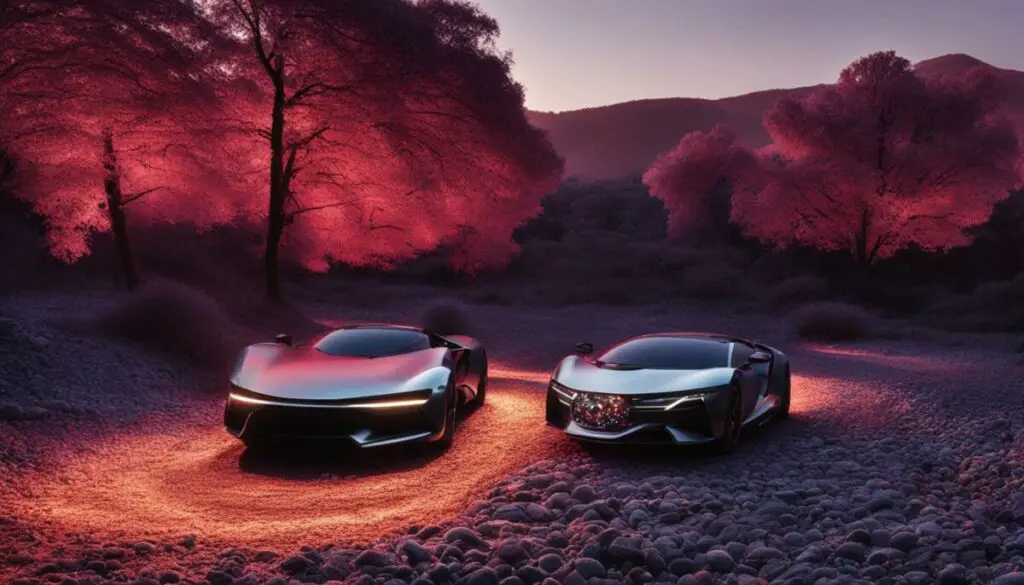
Before we explore whether the iPhone camera can see infrared, it’s essential to understand how it works. The iPhone camera uses a combination of hardware and software to capture images and video.
The iPhone camera is equipped with a lens, image sensor, and processor. When you take a photo, the lens captures the light and focuses it onto the image sensor, which converts the light into an electrical signal. The processor then takes the signal and creates a digital image.
So where does the infrared sensor come into play? The iPhone camera does not have a dedicated infrared sensor, but it does have the ability to detect some infrared light. This is due to the properties of the image sensor, which has some sensitivity to infrared wavelengths.
However, this sensitivity is limited, and the iPhone camera is not capable of capturing high-quality infrared images without additional enhancements.
Exploring Infrared Light
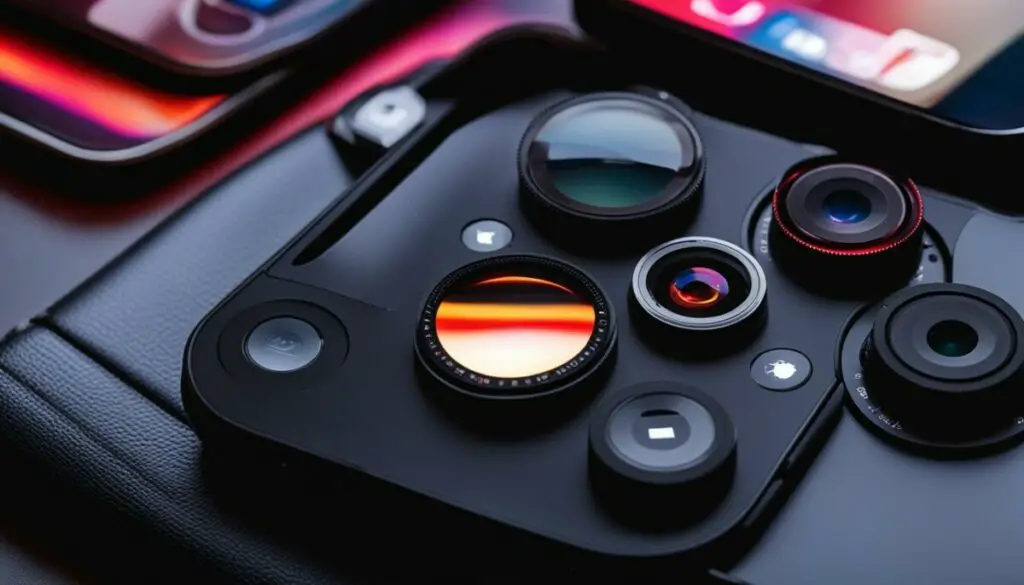
Before we dive into whether the iPhone camera can see infrared light, let’s first take a closer look at what infrared light is and how it behaves.
Infrared light is a type of electromagnetic radiation that falls outside of the visible spectrum. While humans cannot see infrared light with the naked eye, some animals, such as snakes and insects, have the ability to detect it.
Infrared light has longer wavelengths than visible light, which means it can penetrate certain materials, such as smoke and fog, more easily. Infrared radiation is also emitted by all objects with a temperature above absolute zero, which is why it’s commonly used in thermal imaging to detect hot spots or temperature differences.
So, can the iPhone camera see infrared light? While the native iPhone camera does not have the capability to capture infrared light, there are ways to enhance the camera’s ability to detect it.
One possibility is to use an external infrared filter, which can be attached to the camera lens to block out visible light and only capture infrared light. Another option is to use an infrared camera app, which can adjust the camera settings to detect infrared light.
Using the iPhone as an infrared camera may not be as straightforward as using a dedicated infrared camera, but it is certainly possible with the right tools and techniques.
Infrared Photography with the iPhone
Infrared photography offers a unique perspective on the world, revealing hidden details and creating ethereal, otherworldly images. While dedicated infrared cameras exist, it’s possible to capture infrared photos using an iPhone. Here, we will explore some techniques for taking infrared photos with an iPhone.
Using an Infrared Filter
One way to capture infrared photos with an iPhone is by using an external infrared filter. These filters block out visible light and allow only infrared light to pass through, which is then captured by the iPhone camera.
The filter needs to be attached to the iPhone camera lens, and the resulting photos may have a reddish or pinkish hue due to the specific wavelengths of infrared light that are captured. However, these colors can be adjusted in post-processing.
| Pros | Cons |
|---|---|
| Relatively inexpensive compared to dedicated infrared cameras | Requires an additional accessory and can be cumbersome to use |
| Offers a unique perspective on the world | May produce some discoloration or hotspots in the resulting photos |
Overall, using an infrared filter can be a cost-effective way to experiment with infrared photography on an iPhone, but it may not produce the highest-quality results.
Post-Processing Techniques
Another way to achieve infrared-like effects on iPhone photos is through post-processing. By adjusting the color channels, contrast, and tone curve, it’s possible to create images with a similar look to infrared photos.
There are several apps available that can help with this, including Photoshop Express, Snapseed, and VSCO. These apps allow for more fine-tuned adjustments than the native iPhone photo editor.
| Pros | Cons |
|---|---|
| No additional accessory required | May not produce the same level of detail as actual infrared photos |
| Great for experimenting with different looks and effects | Requires some knowledge of photo editing techniques and software |
While post-processing can’t replicate the precise details captured through a dedicated infrared camera, it can offer a creative way to experiment with infrared-like effects on iPhone photos.
Exploring the iPhone’s Built-In Capabilities
It’s worth noting that the native iPhone camera does have some limited capabilities for detecting infrared light. While it’s not possible to capture true infrared photos without external enhancements, the iPhone camera can capture a small amount of infrared light that is present in the environment.
This can result in some interesting and unique effects, such as lenses that appear to glow in the dark or foliage that appears white. However, these effects are generally subtle and may require specific lighting conditions to achieve.
In conclusion, there are several ways to achieve infrared-like effects on iPhone photos, from using external filters to post-processing techniques. While the native iPhone camera does have some limited capabilities for detecting infrared light, capturing true infrared photos requires additional enhancements. However, with some experimentation and creativity, it’s possible to create some truly unique and fascinating photos with an iPhone.
Infrared Camera Apps for iPhone
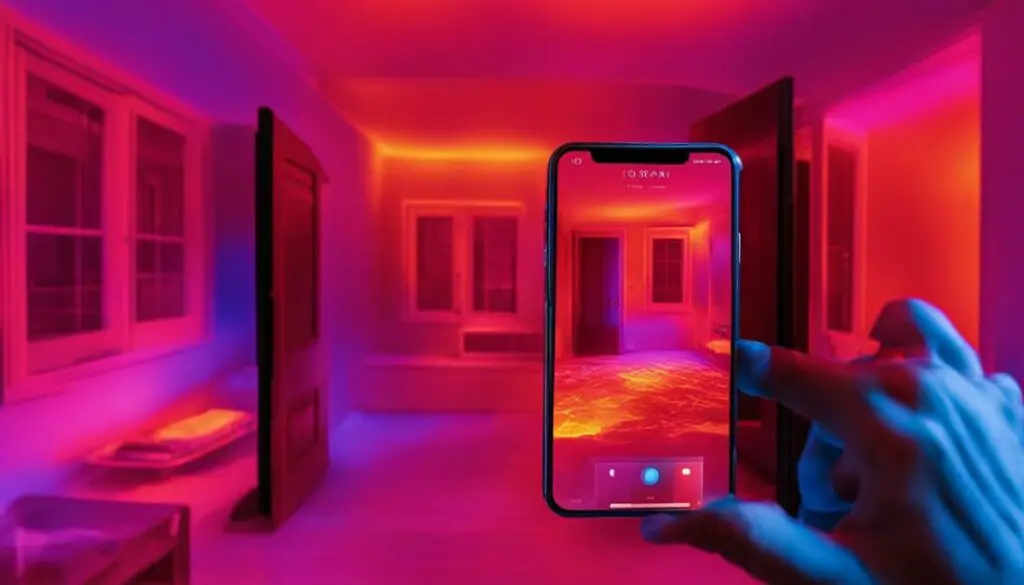
If the native iPhone camera doesn’t have the capability to capture infrared light, there are third-party apps available that can enable this functionality. Let’s take a look at some of the infrared camera apps for iPhone that are currently available:
| App Name | Description | Price |
|---|---|---|
| FLIR ONE | This app works with the FLIR ONE thermal camera attachment for iPhone, which allows for infrared imaging. The app offers a range of features, including temperature measurement and spot metering. | Free |
| Thermal Camera | This app uses the iPhone’s camera to capture infrared images. It offers a variety of color palettes and image settings for customization. | $4.99 |
| Therm-App | This app works with the Therm-App thermal imaging camera attachment for iPhone. It offers a range of features, including adjustable temperature range and image enhancement. | Free |
| Night Vision Camera | This app is designed for low-light and night photography, but also has infrared capabilities. It offers a variety of settings and filters for adjusting images. | $2.99 |
It’s important to note that some of these apps may require additional hardware, such as a thermal imaging camera attachment, to enable infrared capabilities. Additionally, not all apps may work seamlessly with all iPhone models. Be sure to check compatibility before downloading.
Using an infrared camera app can be a cost-effective solution for capturing infrared light without investing in dedicated infrared camera equipment. However, the quality of the images may not be as high as those captured by dedicated cameras, and some apps may have limited functionality.
Using External Filters for Infrared Photography

External filters can be a useful tool for enhancing the iPhone camera’s ability to capture infrared light. An infrared filter for iPhone camera is a filter that blocks visible light, allowing only infrared light to pass through to the camera sensor. The presence of an infrared filter can greatly improve the quality of infrared photos taken with the iPhone.
There are various types of infrared filters available on the market, each with different specifications and capabilities. Some filters are designed to block all visible light, while others block only a portion of it. The strength of the filter can also vary, with some filters being more effective at blocking visible light than others.
When selecting an infrared filter for the iPhone camera, it’s important to consider the specific needs and preferences of the photographer. Some filters may produce a more dramatic effect, while others may provide a more subtle, natural look. Experimenting with different filters can help determine which one is the best fit for a particular project or subject.
| Type of Infrared Filter | Visible Light Blocked | Effect on Infrared Photos |
|---|---|---|
| 720nm | Most visible light is blocked | Produces a dramatic, high-contrast effect |
| 760nm | Blocks some visible light | Produces a more natural, subtle look |
| 850nm | Blocks minimal visible light | Produces a soft, dreamy effect |
It’s also worth noting that using an external filter to shoot infrared photos may require longer exposure times than normal photography. This can be due to the low levels of light that pass through the filter and reach the camera sensor. Experimenting with different exposure settings can help find the optimal balance between exposure time and image quality.
Overall, using an infrared filter for iPhone camera can be a simple and effective way to enhance the iPhone’s ability to capture infrared light. With a variety of filters available and the ability to experiment with exposure settings, photographers have the flexibility to achieve a range of unique and creative results.
Potential Limitations of the iPhone Camera
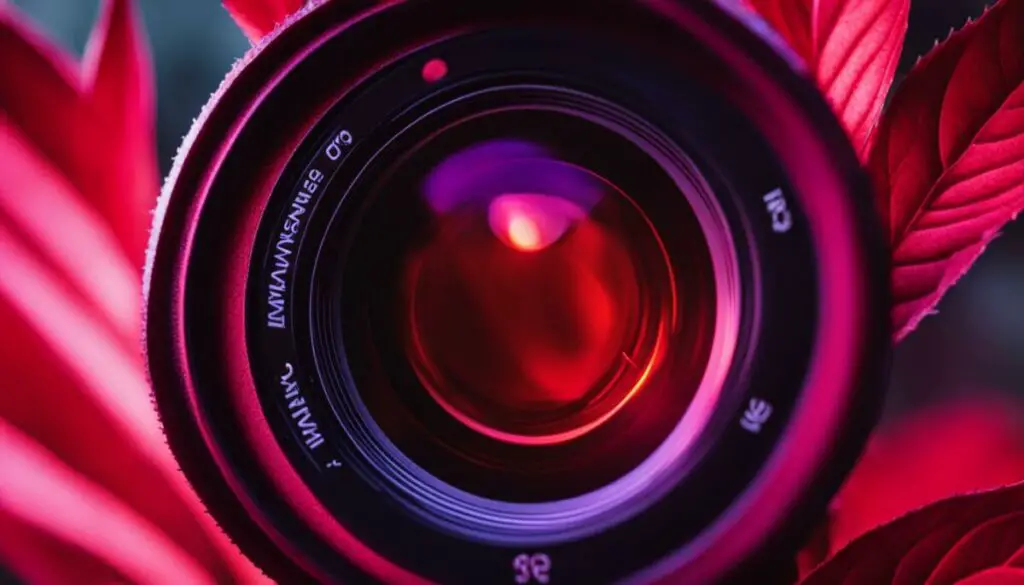
Despite advancements in smartphone camera technology, there may still be limitations to what the iPhone camera can achieve in terms of infrared photography. The biggest limitation is the absence of an infrared sensor in the iPhone camera. This means that the camera is unable to detect infrared light, making it difficult to capture images in low light settings or at night.
Furthermore, the standard camera lenses used in the iPhone are not optimized for capturing infrared light, which further limits the camera’s capabilities in this area. This may result in blurry or low-quality images when attempting to capture infrared imagery with the iPhone.
It’s also worth noting that even with external enhancements, such as infrared camera apps or filters, the iPhone may still have limitations in terms of overall image quality. Dedicated infrared cameras are specifically designed for capturing high-quality infrared imagery, and therefore may provide superior results compared to using an iPhone camera.
Despite these limitations, the iPhone camera can still be a valuable tool for capturing infrared imagery, particularly with the use of external enhancements. It’s important to understand the capabilities of the camera and any potential constraints before attempting to capture infrared images with the iPhone.
Tips for Using the iPhone Camera for Infrared Photography
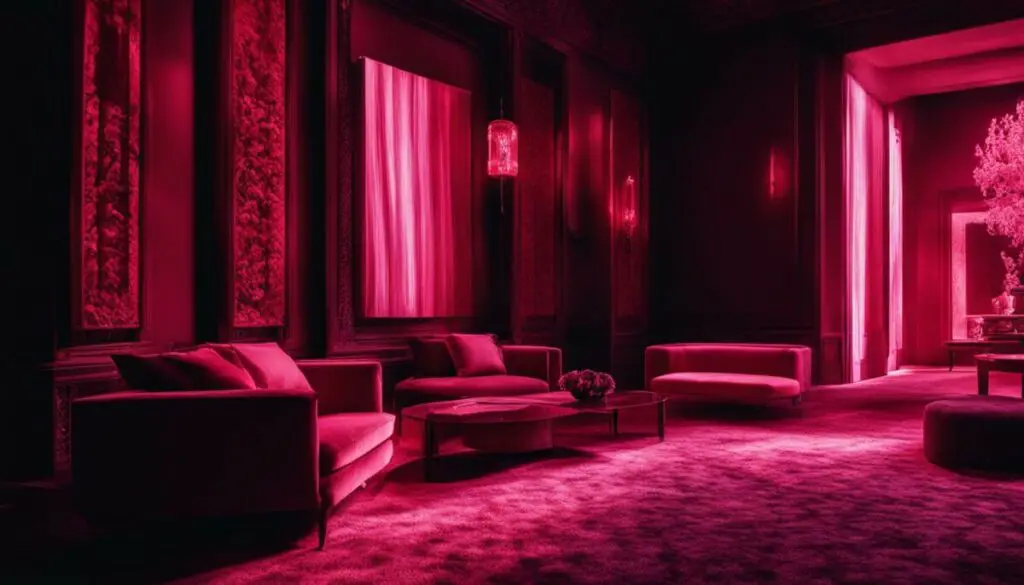
If you’re interested in experimenting with infrared photography using your iPhone camera, here are some tips to help you get started.
- Use an infrared camera app: While the native iPhone camera may not have the capability to capture infrared light, there are several third-party apps that can enable this function. Look for apps that specifically mention infrared capabilities, such as the NightCap Camera app.
- Experiment with different filters: External filters can be attached to your iPhone camera lens to enhance its ability to capture infrared light. Try out different filters to see how they affect the final image, such as the Hoya R72 or Lee Filters.
- Shoot in bright sunlight: Infrared photography tends to produce the best results in bright sunlight. This is because infrared light is more abundant in sunlight and will result in a more vivid image. Avoid shooting in cloudy or overcast conditions.
- Adjust exposure settings: Infrared light has different exposure requirements than visible light. Experiment with adjusting the exposure settings on your iPhone camera to achieve the desired effect. You may need to increase the exposure time to capture more infrared light.
- Look for unique subjects: Infrared photography can produce stunning, otherworldly images. Look for subjects that will produce interesting contrasts and patterns, such as trees, water, or architecture.
By following these tips, you can begin to explore the world of infrared photography using your iPhone camera. Keep in mind that there may be limitations to what the iPhone camera can achieve in terms of infrared photography, but with some experimentation and creativity, you can still produce stunning images.
Exploring Other Smartphone Options
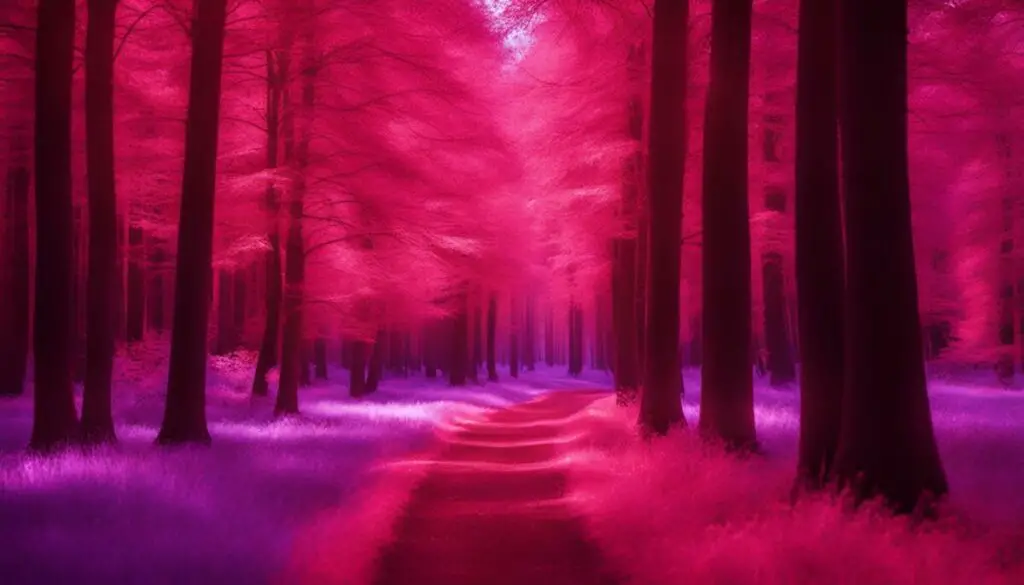
While the focus of this article is on the iPhone camera and its capabilities for capturing infrared light, it’s worth considering other smartphone models as well. Some Android models, such as the Samsung Galaxy S20 Ultra, have infrared sensors embedded in the camera module.
However, it’s important to note that not all Android phones have this feature, and the ones that do may not offer the same level of infrared sensitivity as dedicated infrared cameras.
If capturing infrared light is a priority, it’s worth researching the capabilities of different smartphone models and comparing them to dedicated infrared cameras.
In the meantime, let’s continue exploring the options available for using an iPhone as an infrared camera.
Comparison to Dedicated Infrared Cameras
While the iPhone camera may have the capability to capture infrared light with the use of external enhancements, it’s important to note that dedicated infrared cameras are specifically designed for this purpose. These cameras are equipped with infrared sensors that can detect light outside the visible spectrum and produce high-quality infrared images.
One major advantage of dedicated infrared cameras is their enhanced sensitivity to infrared light, which allows for greater detail and clarity in images. They also typically have a wider range of infrared filters and lenses available, allowing for more versatility in capturing different types of infrared light.
When compared to the iPhone camera, dedicated infrared cameras may also have better battery life and faster processing capabilities, which can be especially important for professional photographers.
However, it’s worth noting that dedicated infrared cameras can be much more expensive than an iPhone camera with external enhancements. Additionally, the convenience and versatility of using a smartphone for infrared photography may outweigh the benefits of a dedicated camera for some users.
Ultimately, whether to use a dedicated infrared camera or the iPhone camera with external enhancements will depend on the specific needs and preferences of the photographer. For those who prioritize high-quality and professional-grade infrared images, a dedicated camera may be the better option. However, for those who value convenience and affordability, the iPhone camera with external enhancements can still produce impressive infrared photos.
Conclusion
After exploring the capabilities of the iPhone camera in capturing infrared light, it’s clear that while the native camera may not be equipped for this functionality, there are still options available for capturing infrared photos.
Infrared camera apps and external filters can help optimize the iPhone camera for infrared photography, but it’s important to consider the limitations of the iPhone camera and explore alternative options if capturing infrared light is a priority.
Tips for Using the iPhone Camera for Infrared Photography
If you’re interested in using the iPhone camera for infrared photography, there are a few tips and tricks that can help optimize your shots:
- Look for subjects with high contrast, such as foliage against a clear sky.
- Experiment with using different filters to achieve different effects.
- Try shooting during sunrise or sunset for a warm and dramatic effect.
- Adjust your camera’s white balance settings to compensate for the lack of visible light.
Exploring Other Smartphone Options
While the focus of this article has been on the iPhone camera, it’s worth noting that other smartphone models may have the capability to capture infrared light. If infrared photography is a priority for you, it may be worth researching alternative smartphone options and their capabilities.
Comparison to Dedicated Infrared Cameras
While the iPhone camera can be optimized for infrared photography, it’s important to note that dedicated infrared cameras are specifically designed for this purpose and may offer superior capabilities. However, for those looking to experiment with infrared photography without investing in a dedicated camera, the iPhone camera can still be a viable option with the right enhancements.
FAQ
Can the iPhone camera see infrared light?
No, the native iPhone camera does not have the capability to see infrared light. It is designed to capture images within the visible spectrum.
Is there an infrared camera app for the iPhone?
Yes, there are third-party apps available that can enable the iPhone camera to capture infrared light. These apps utilize external enhancements to allow for infrared photography.
How does infrared photography work with the iPhone?
Infrared photography with the iPhone requires the use of external filters or an infrared camera app. These tools modify the camera’s sensor to detect and capture infrared light, resulting in unique and often ethereal images.
Can I use external filters for infrared photography on the iPhone?
Yes, external filters can be used with the iPhone camera to enhance its ability to capture infrared light. These filters attach to the lens and block visible light, allowing only infrared light to pass through.
What are the limitations of using the iPhone camera for infrared photography?
While the iPhone camera can be enhanced to capture infrared light, there are limitations to its performance. These limitations can include reduced image quality, longer exposure times, and the need for external accessories.
Are there other smartphone options that can capture infrared light?
While the focus of this article is on the iPhone camera, some other smartphone models may have the capability to capture infrared light. It is worth exploring alternative options if capturing infrared light is a priority.
How does the iPhone camera compare to dedicated infrared cameras?
Dedicated infrared cameras are specifically designed for capturing infrared light and often offer superior performance and image quality. The capabilities of the iPhone camera may not fully match those of dedicated infrared cameras.

